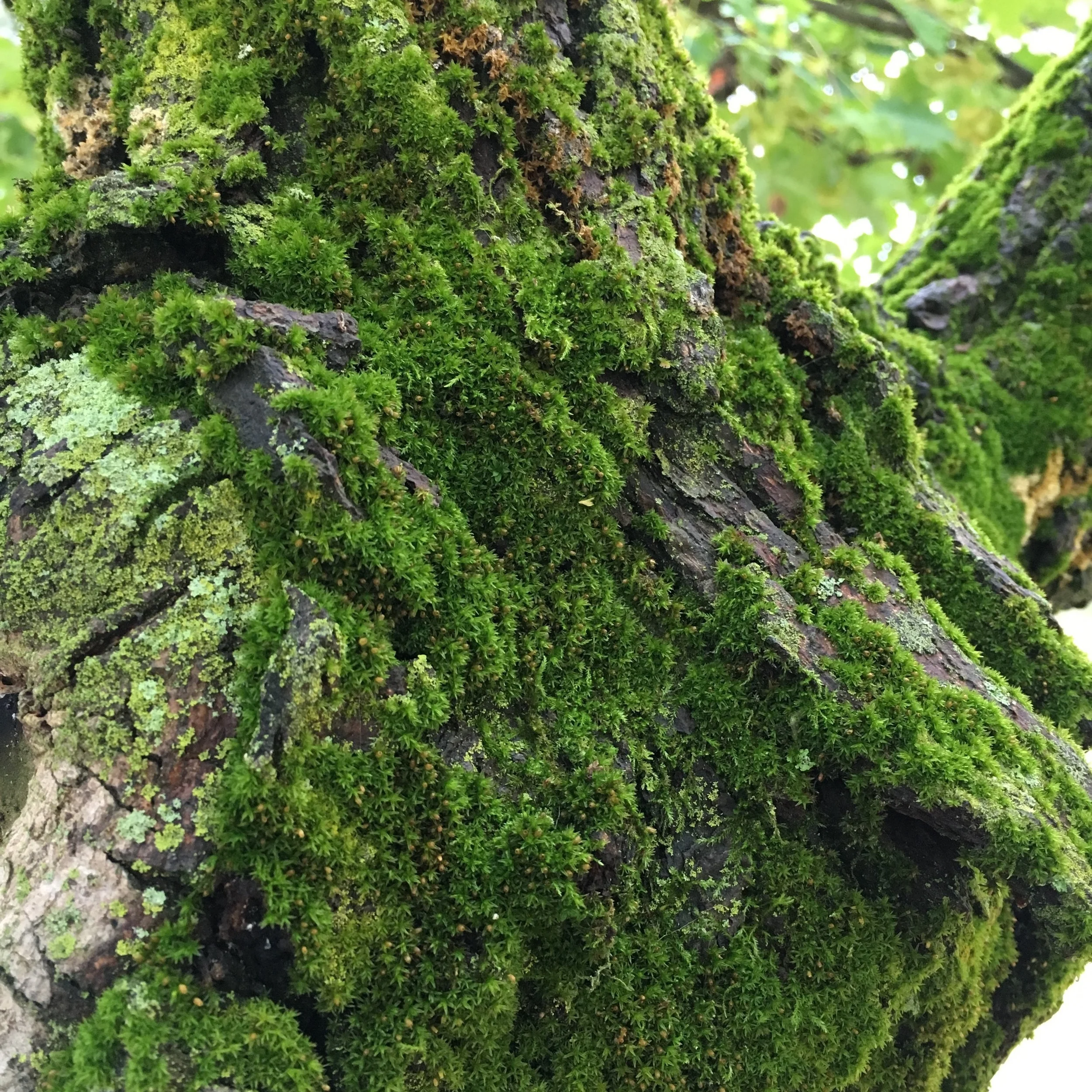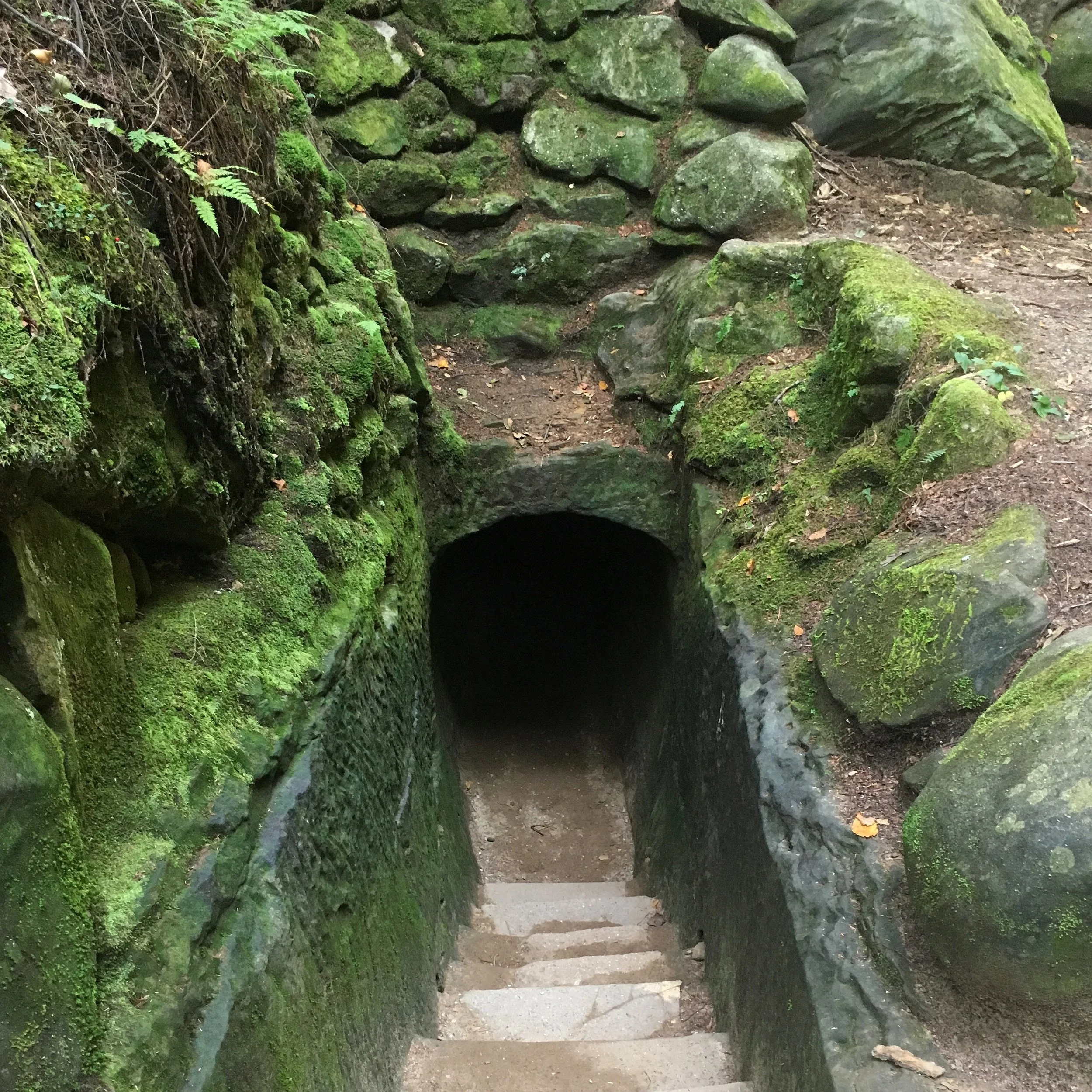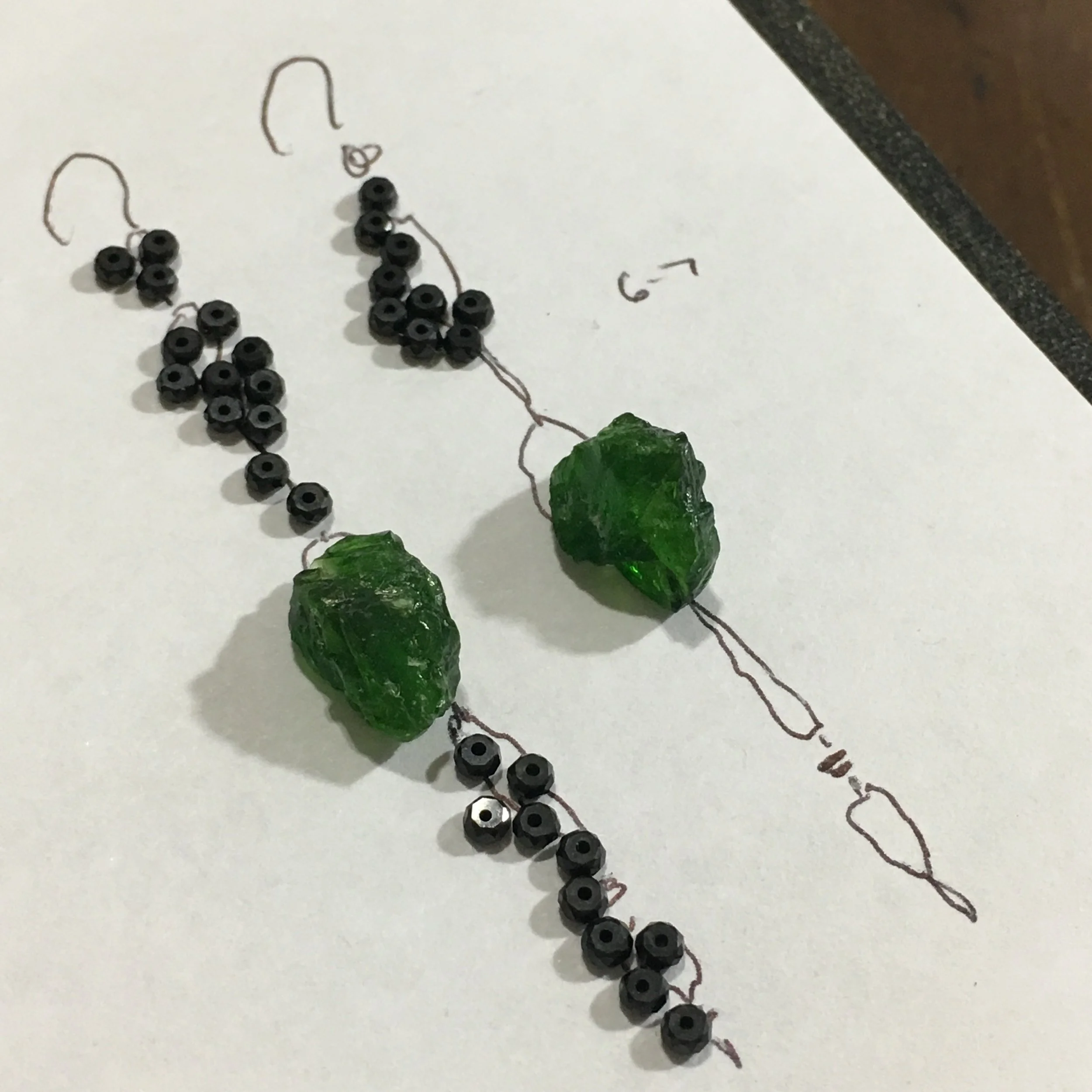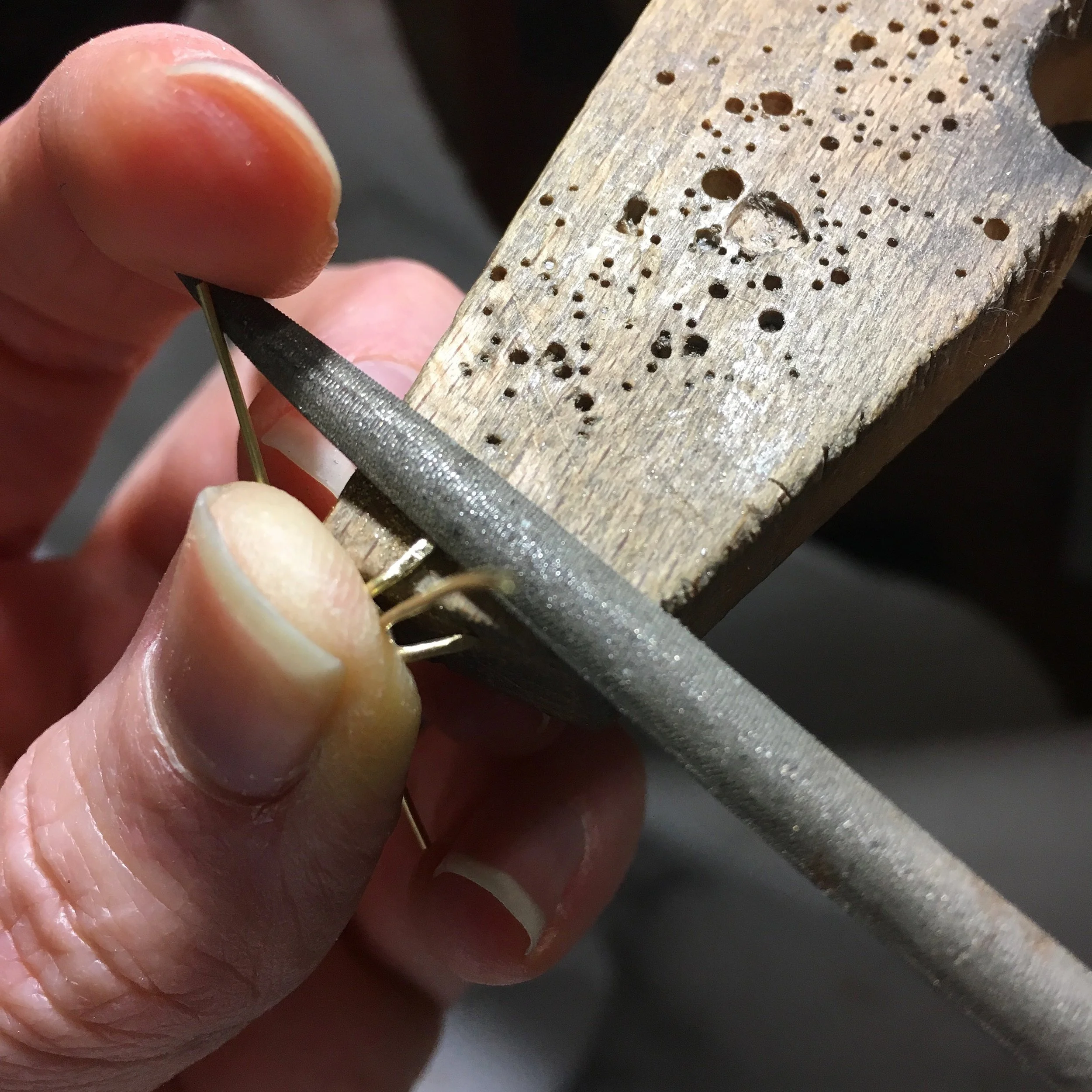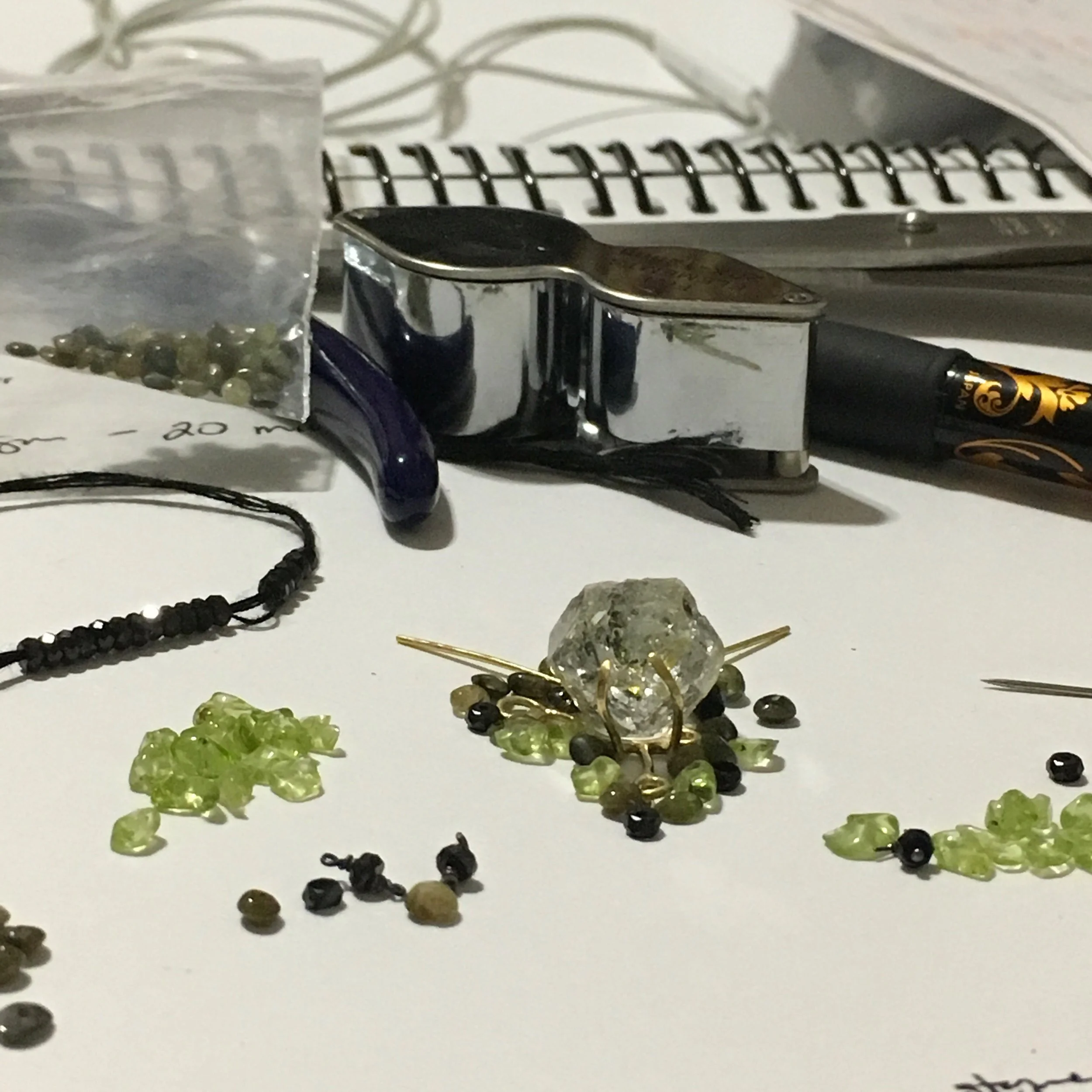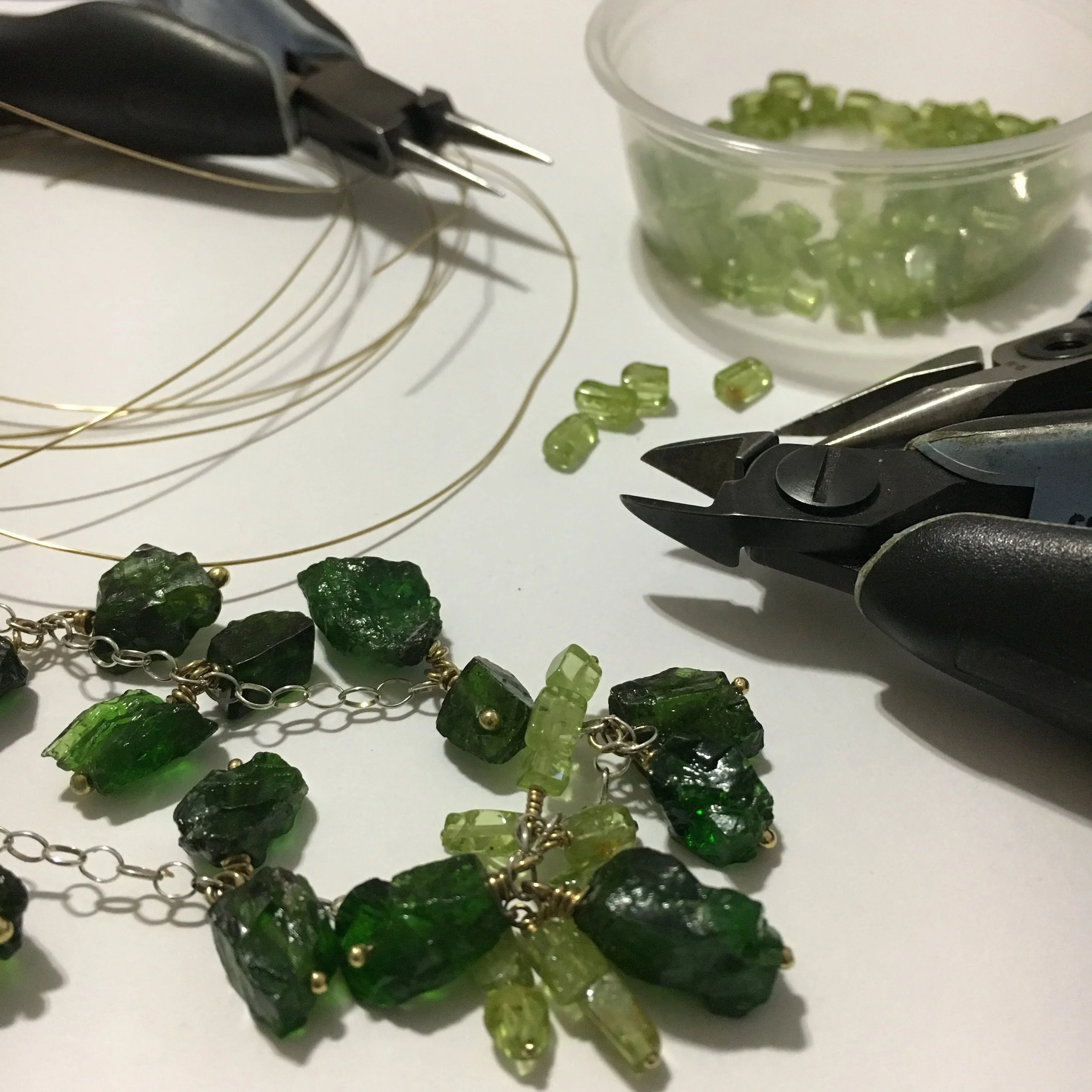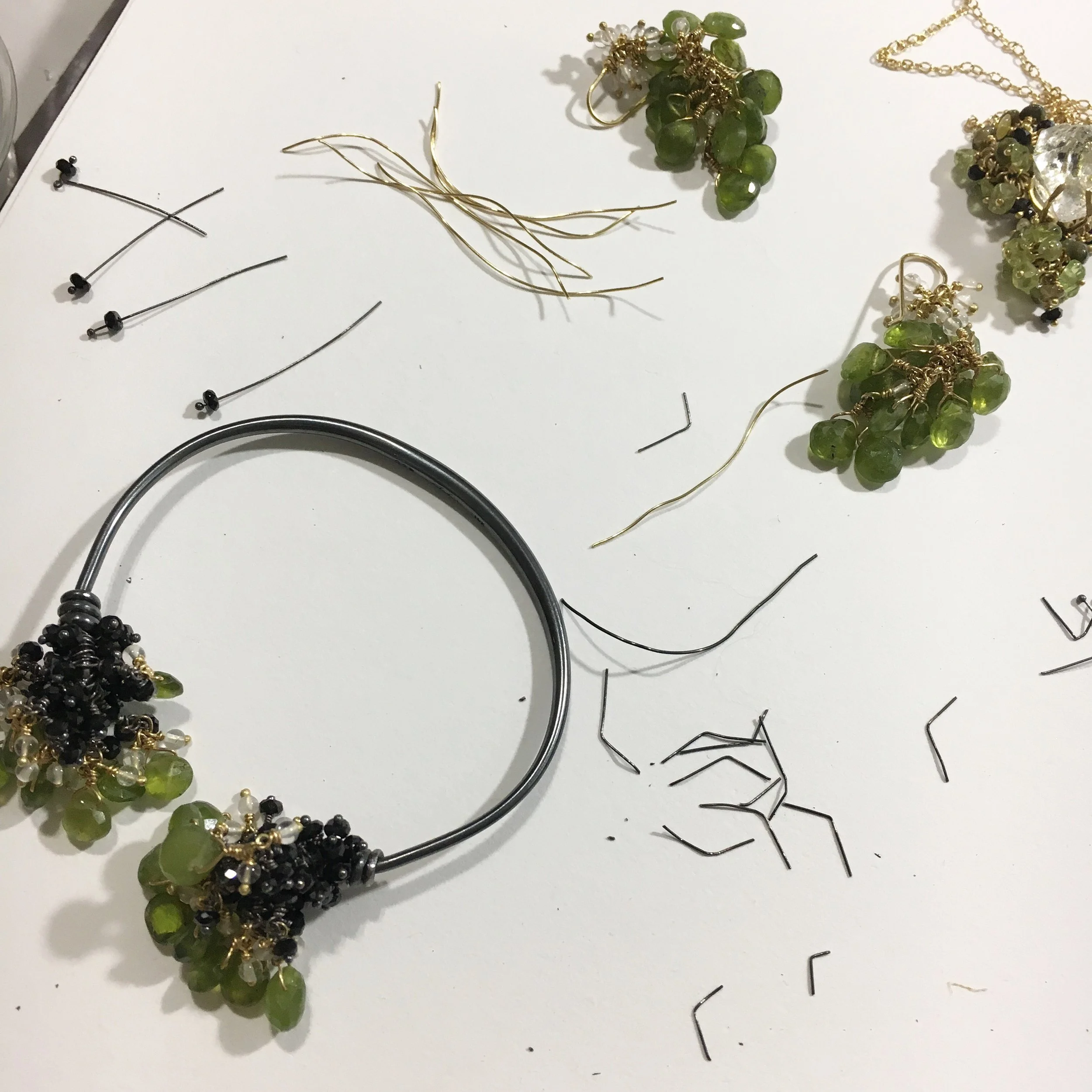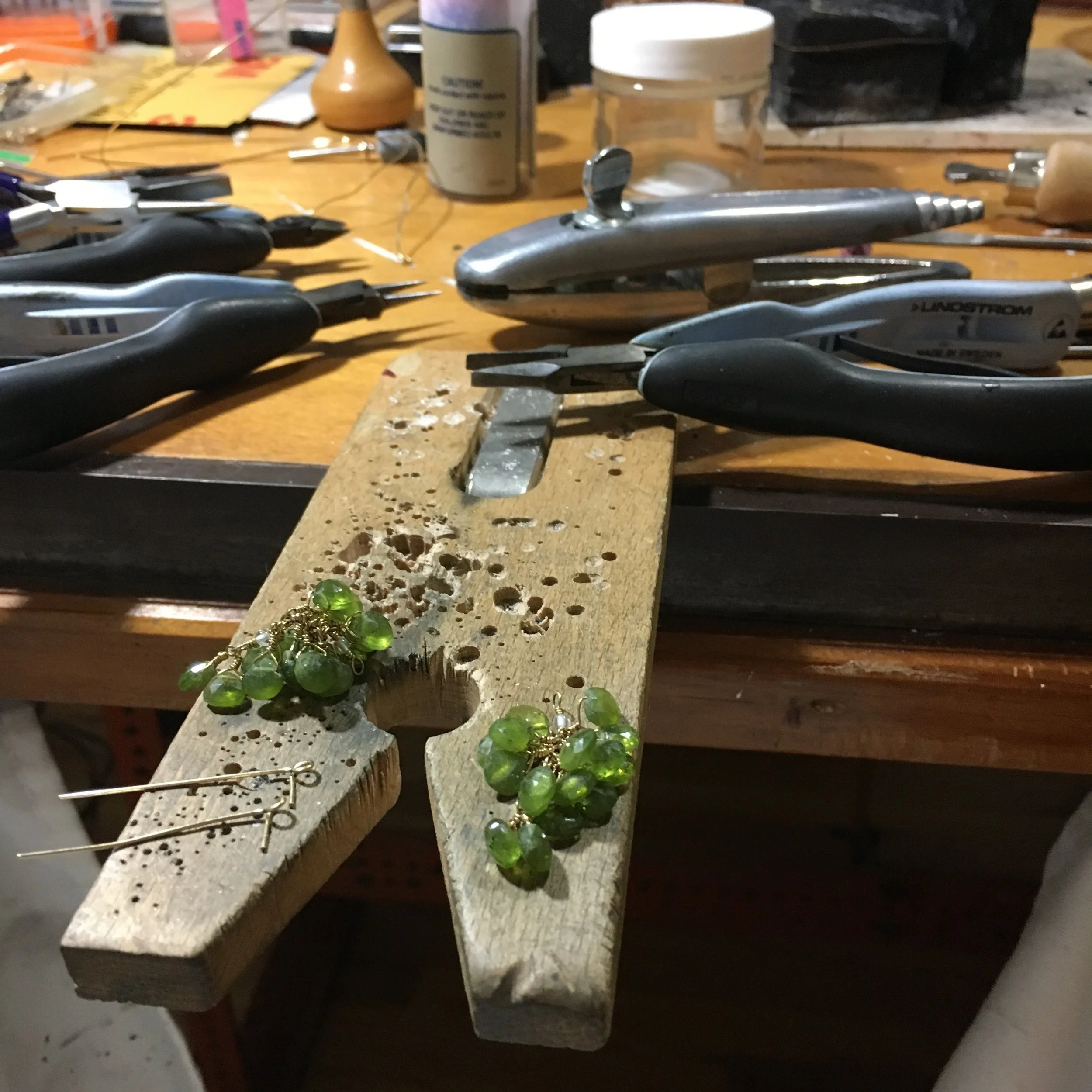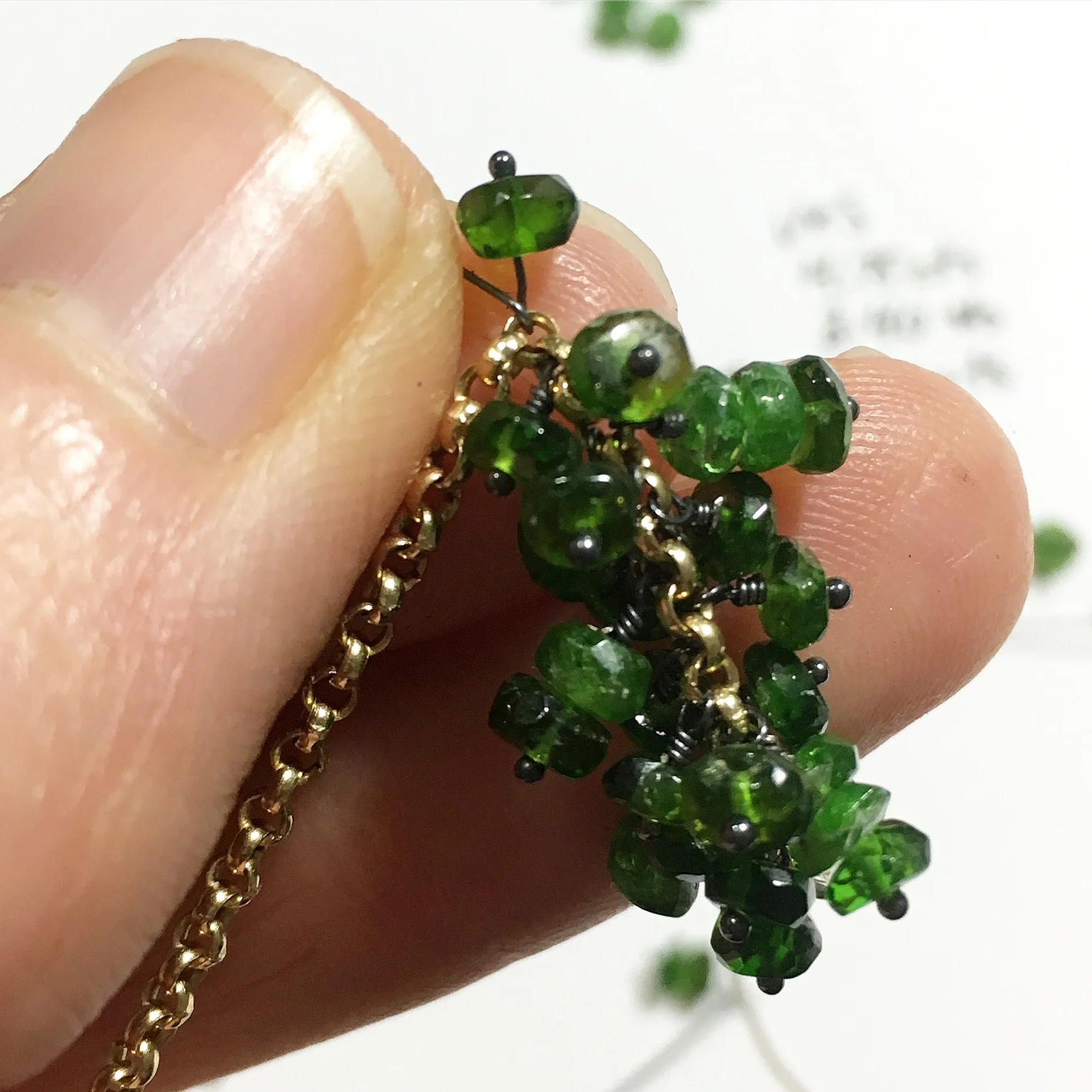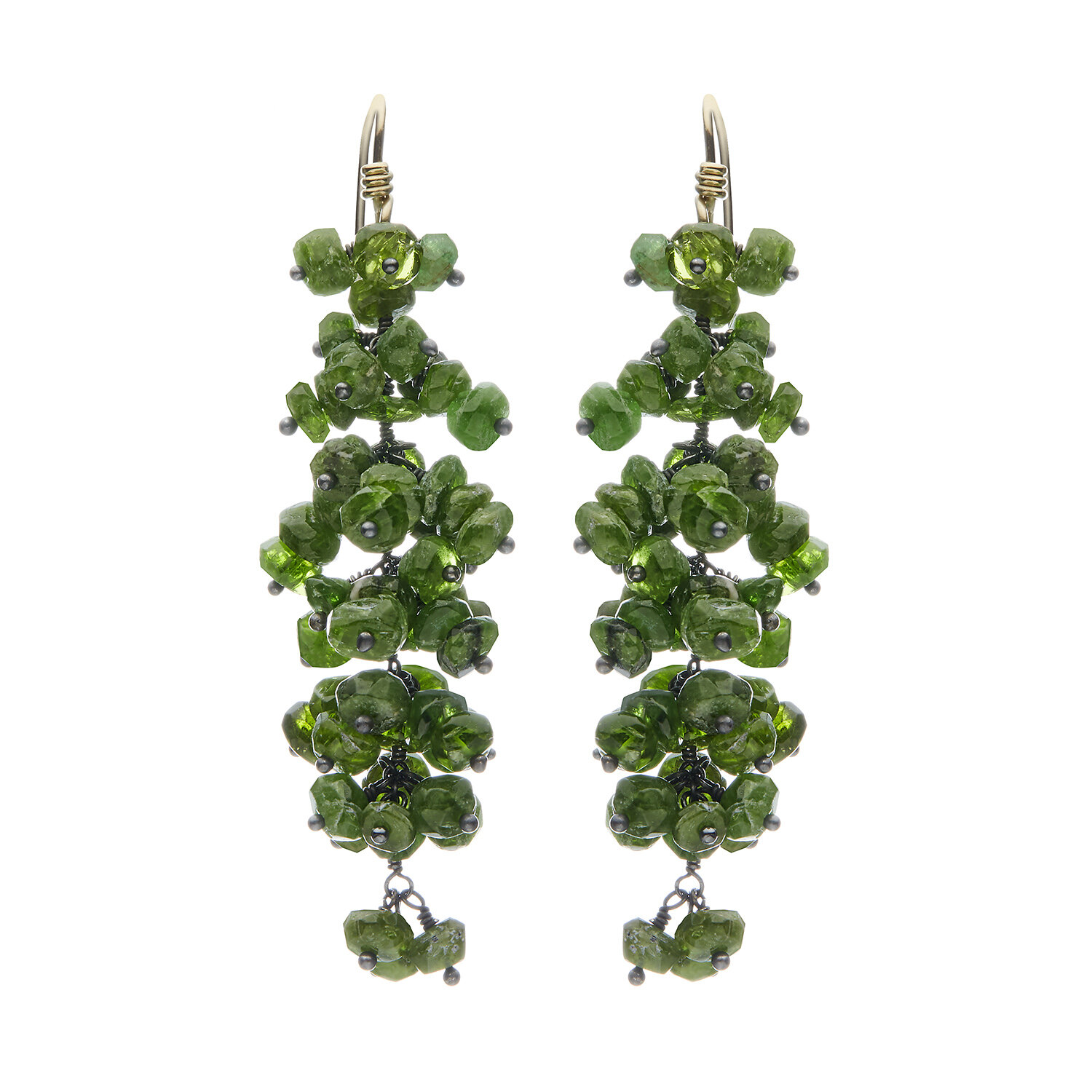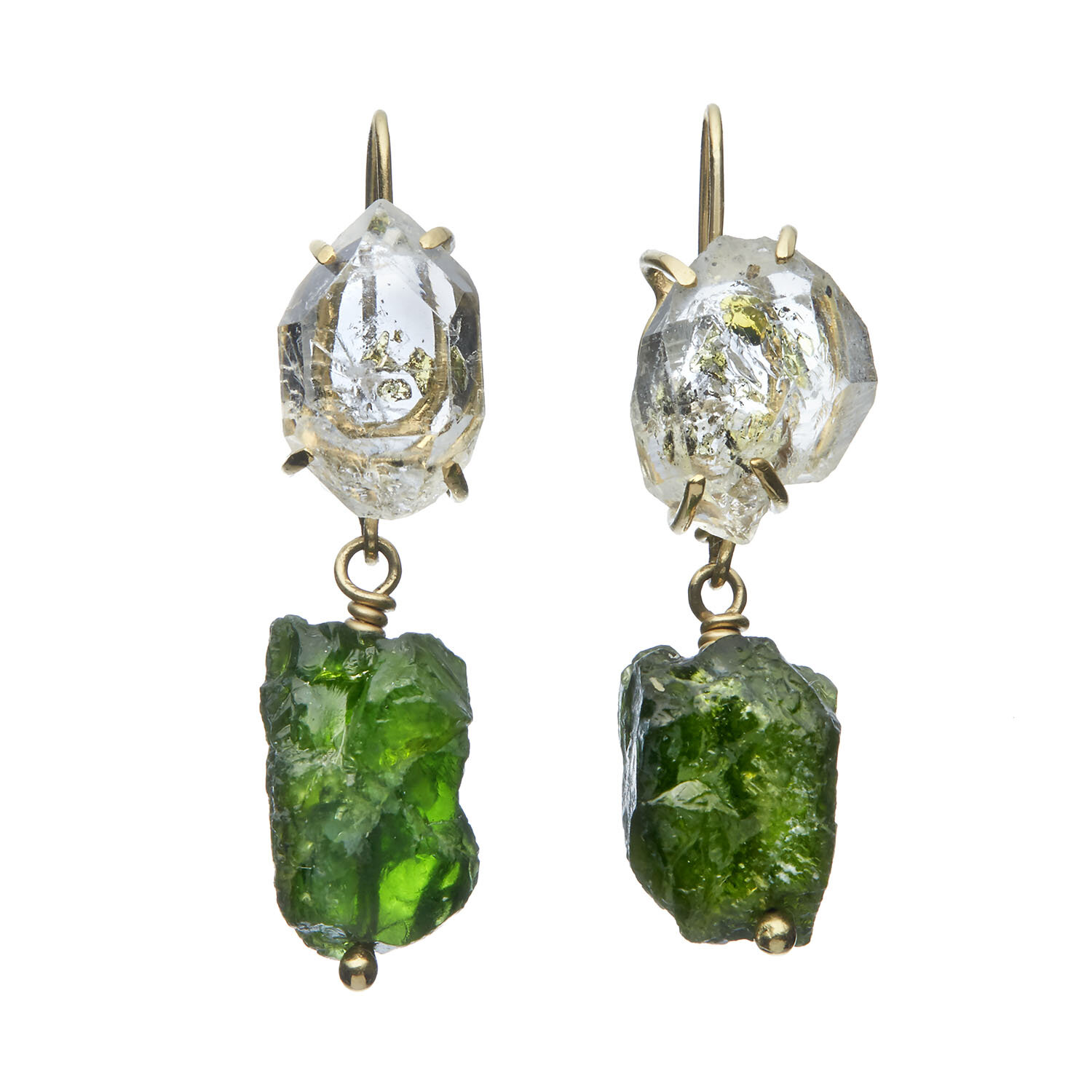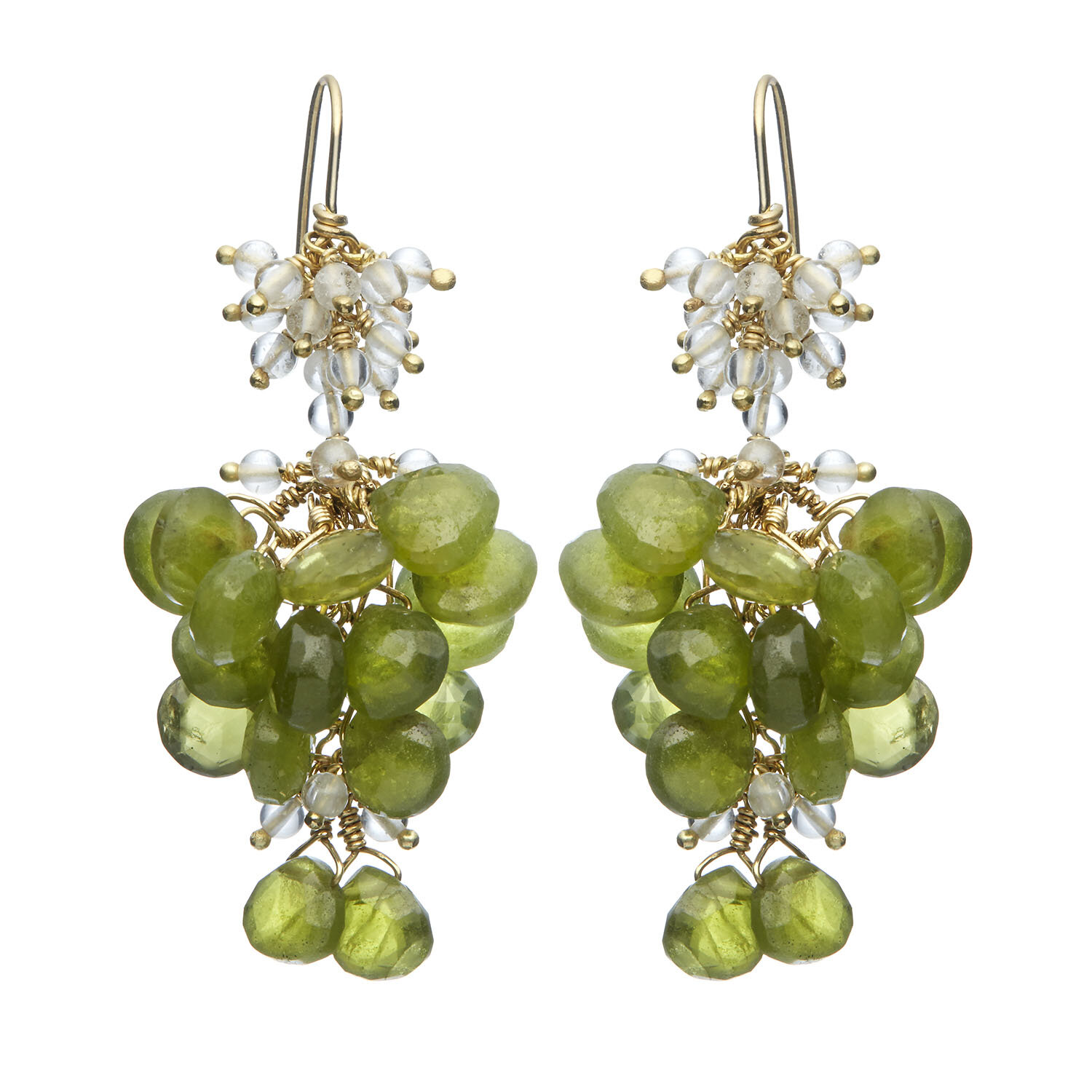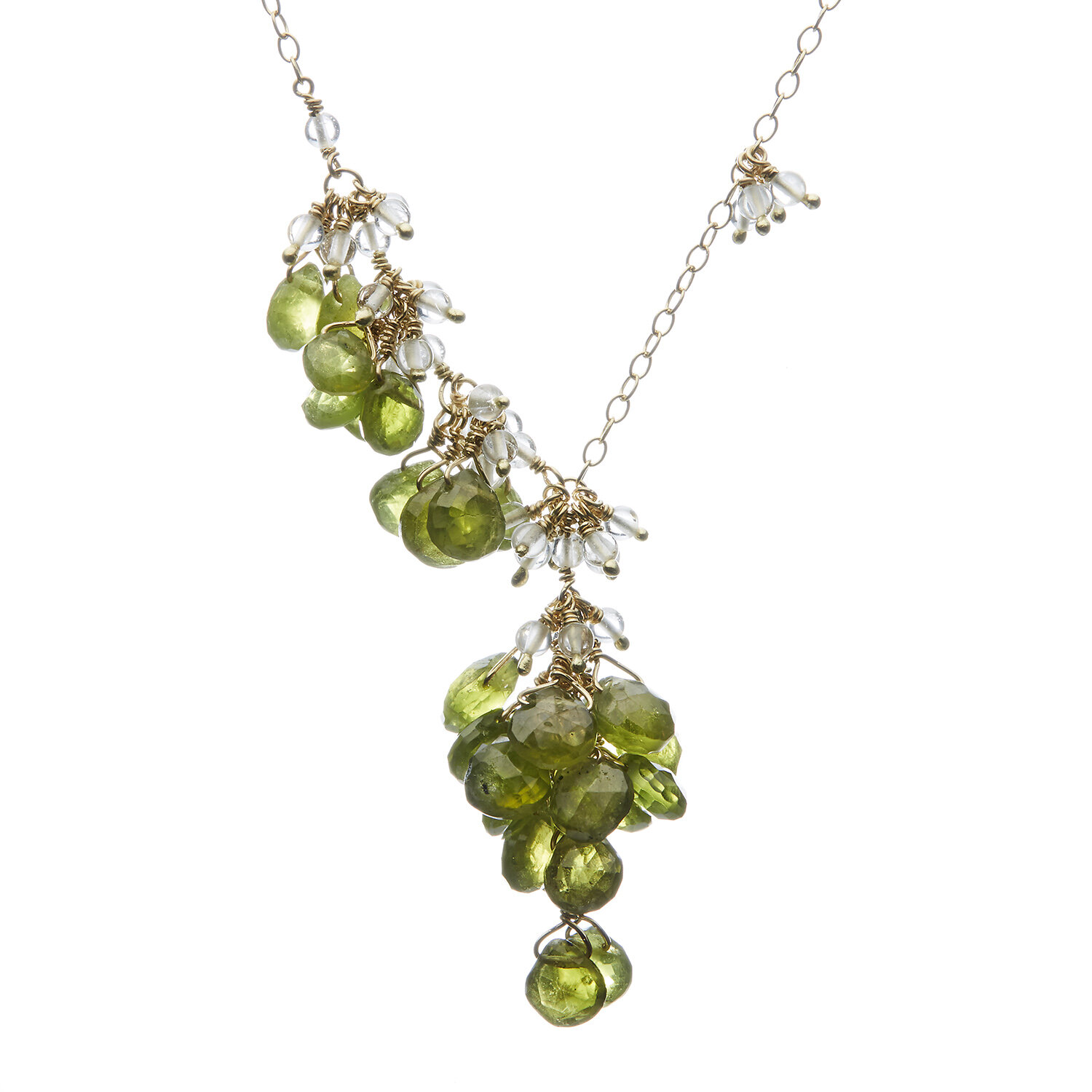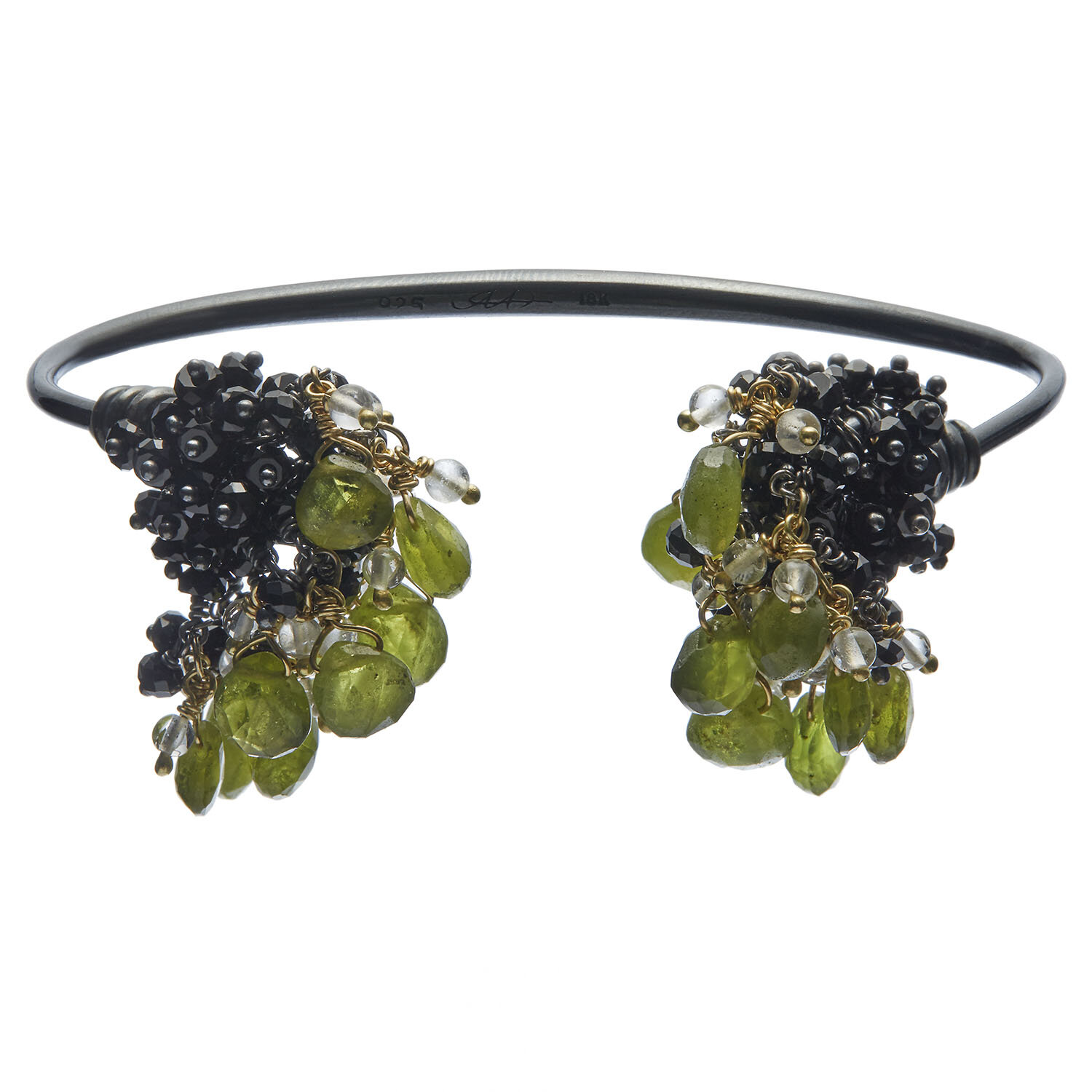Voyageuse: Jewels Inspired by Moss
Michelle Pajak-Reynolds Voyageuse Collection Desma necklace with Golden Enhydro Quartz, Tourmaline, Recycled 18k Gold, and Recycled Oxidized Sterling Silver. Photo credit: Julie Stanley/JuleImages
I first became intrigued by the lush green textures of moss, one of the world’s most ancient and humble of plant life forms, while reading Elizabeth Gilbert’s novel, The Signature of All Things. This novel, set across most of the 19th century, tells the story of Alma Whittaker, the daughter of a savvy botaniste voyageuse (botanical explorer) and how her intense studies of mosses and ferns take her around the world and deep into the wonders of evolution and the mechanisms of all life.
Ever curious about a fellow artist’s creative process, I dug deeper into the references Gilbert cited in The Signature of All Things and discovered another book, Gathering Moss: A Natural and Cultural History of Mosses, by bryologist (moss expert) and SUNY College of Environmental Science and Forestry professor Dr Robin Wall Kimmerer. This beautifully written book combines science, personal essays, and indigenous cultural traditions to illustrate how mosses offer a powerful metaphor for life.
Taking a cue from Alma and Dr Kimmerer, I began to search for moss in my backyard with my toddler-aged daughter and then with my husband along the hiking trails of my two favorite parks in my home state of Ohio, Cuyahoga Valley National Park and Hocking Hills State Park. My search was conducted with an artist’s eye, seeking out color, texture and form, rather than a quest focused on scientific research and species identification. It didn’t take long to discover moss colonies nestled in wise wrinkled tree bark, blanketing rock formations, and flourishing near the mist of waterfalls. Most of the mosses I encountered were dense and rich in vivid shades emerald-green; others were tinged with olive tones and a few had the tiniest of graceful stems beautifully drooping with the weight of delicate water droplets.
Kimmerer often describes mosses as “the coral reefs of the forest" and she also states in Gathering Moss,
At the scale of moss, walking through the woods as a six-foot human is a lot like flying over the continent at 32,000 feet. So far above the ground, and on our way to somewhere else, we run the risk of missing an entire realm which lies at our feet. Every day we pass over them without seeing. Mosses and other small beings issue an invitation to dwell for a time right at the limits of ordinary perception. All it requires of us is attentiveness. Look in a certain way and a whole new world can be revealed.[i]
After hours spent walking in the woods paying attention to different varieties of moss and other tiny signs of life that surrounded me, I understood Kimmerer’s coral reef reference. Similar to healthy coral reefs in the oceans, areas rich in moss are thriving in other life forms as well. Areas that lack moss do not have the same level of biodiversity and are often struggling.
Back in my studio, I began searching for gemstones online and then at trade shows that could represent the rich textures and colors I saw in the woods. The gems had to be interesting and ideally one-of-a-kind. First came 6 strands of rough chrome diopside beads. I immediately feel in love with the miniature peaks and valleys present in each unique stone and saw them as a perfect representation for the varied landscape of moss colonies. I bought the entire lot and left my dealer’s booth giddy with my new glistening green treasure tucked in my bag.
Six strands of rough chrome diopside beads. The unique green shades of chrome diopside are caused by trace amount of the mineral chromium in the stones. Photo credit: Michelle Pajak-Reynolds
Chrome diopside is unique among the world of green gemstones, as it has no known color enhancements. Some of the most popular green stones, like emeralds, have their colors enhanced and stabilized with resins or oils. This currently doesn’t occur with chrome diopside, so the luscious green you see, a result of trace amounts of the mineral chromium, is exactly how Mother Nature intended these stones to be.
Next came seven faceted golden enhydro quartz crystals. I first learned of golden enhydro quartz, also known as petroleum included quartz, during a gem-buying trip in New York City in March 2017. Enhydros are natural water or fluid filled chambers found within a crystal or mineral. Golden enhydros get their name when quartz forms around liquid yellow petroleum oil deposits and encases them inside forever. This process unfolds over millions of years and golden enhydros are most often found in the Himalayas, Afghanistan, and Pakistan. I’m fascinated with these stones and love mixing them with the dynamic greens of chrome diopside.
Detail view of golden enhydro quartz also known as petroleum included quartz under 10x magnification of a jeweler's loupe. Note the tiny air bubble within the golden yellow petroleum inclusion. Photo credit: Michelle Pajak-Reynolds
Another remarkable characteristic of golden enhydro quartz is that the petroleum inside the gems will fluoresce when exposed to UV light. Fluorescence is a natural phenomena that occurs in several gemstones. When it occurs in golden enhydro quartz it's extra special because quartz doesn't fluoresce on its own, it's only through the imperfections of the petroleum that these stones "glow from within." This glow is reminiscent of a rare luminescent moss, Schistostega pennata, commonly known as Goblin's Gold or Dragon's Gold moss.
Detail of the golden enhydro quartz in Michelle Pajak-Reynolds's Desma pendant fluorescing under UV light. Photo courtesy: Benjamin Guttery/Third Coast Gems
A few more weeks went by and then I discovered several strands of faceted vesuvianite beads in shades of forest-green and olive. Vesuvianite is usually found in shades of olive-green so finding a handful of strands in the perfect forest-green is really special. More olive tones were added to my palette with tiny tourmalines and tying the entire color scheme together came via strands of smooth peridot and faceted black spinel.
Once my color palette was complete, I knew I wanted the Voyageuse collection to include gemstone clusters and graceful curves and arcs, like the moss colonies I saw during my hikes. I began laying out stones and experimenting with forging various thicknesses of copper wire before working in recycled 18k yellow gold and sterling silver for my final designs. Forging is an ancient metalsmithing technique that allows metal to move in a controlled way. Multiple rounds of heating, cooling and hammering the metal results in elegant transitions and contrasts between thick and thin sections and produced the look I wanted for the collection.
When I design I prefer giving each piece a name rather than a style number. The names for individual designs within the Voyaguese collection eluded me for weeks, until I began researching the scientific names for mosses. Unlike other plants, most mosses don’t have common names and are only known by their scientific, or Latin name, listing genus and species. There is such poetry in the Latin language and each piece within Voyageuse has its name inspired by the original Latin names of different mosses.
Spending time in nature, especially the woods, gives me great joy and while I love the idea of blazing new trails, this can be very harmful to delicate plants like mosses and dangerous for hikers. So, to help preserve the beauty and encourage the respectful enjoyment our natural world, I’m donating 5% of each Voyageuse collection purchase to the Conservancy for Cuyahoga Valley National Park’s (CVNP) Trails Forever Fund. The Trails Forever Fund’s sole focus is on the operation and maintenance of CVNP’s trail system and ensuring safe trails for all to enjoy forever.
[i]Wall Kimmerer, Robin, Gathering Moss: A Natural and Cultural History of Mosses, Oregon State University Press, 2003
If you’ve enjoyed this article, you may also like:
“Robin Wall Kimmerer: The Intelligence of All Life” On Being with Krista Tippett
“ME AND MY MOSS MENTOR! Sweet friends – Do you want to hear a story about sisterhood and support?”by Elizabeth Gilbert
Braiding Sweet Grass: Indigenous Wisdom, Scientific Knowledge and the Teachings of Plants by Robin Wall Kimmerer



